Words: Catalin Gruia
Photos: Dan Dinu
October 2023
Imagine a place so extraordinary that even a seasoned traveler like NatGeo photographer Costas Dumitrescu, who has been all around the globe, compares it to “being on another planet.” This amazing destination, which the Romanian explorer returns to “at least once a year,” is none other than the Danube Delta, right in his homeland. “As someone raised in the city, the unreal abundance of fish and birds, its unique smell, and the sense of boundlessness and mystery within the delta’s towering reed walls still amaze me to this day,” says Dumitrescu.
At the top of any foreign visitor’s must-see list, the Danube Delta – the youngest Romanian land (having emerged in the last 15 – 20,000 years) – is a collection of superlatives: UNESCO World Heritage Site status, a RAMSAR site and NATURA 2000 area, it features 15 heritage sites (including Castres, Greek, and Byzantine fortresses); it comprises 30 types of ecosystems, and hosts over 9,500 species of plants and animals.
But the list doesn’t end there. The delta is home to the world’s largest compact area of reed beds and the largest colony of pelicans on the planet. The more than 400 lakes in the lagoon complex, covered in the summer with carpets of water lilies, thistles, mint, and several other aquatic plants, are interrupted by the sandy banks of the sea fields. There are also impressive bodies of forests with an astonishing exhibition of trees interwoven with wild climbing plants that make you feel like stepping into a giant jungle. And of course, most importantly, the delta is where millions of birds from Europe, Asia, and Africa come to nest – a paradise for birdwatchers. In fact, it is home to 360 bird species.
Carmina Nițescu, who has been organizing kayak photo tours in the Danube Delta alongside her husband Călin Stan for years, describes the area’s unique charm: “Even during the summer months, mornings are cold. But the fog makes things more interesting: you come across all kinds of birds almost impossible to see during the day, like the night heron. At the entrance to Lac Rădacinos (a popular natural lake), you might come across a fisherman checking his nets. Seagulls or pelicans lazily float on the water beside the boats, patiently waiting for something to happen.”
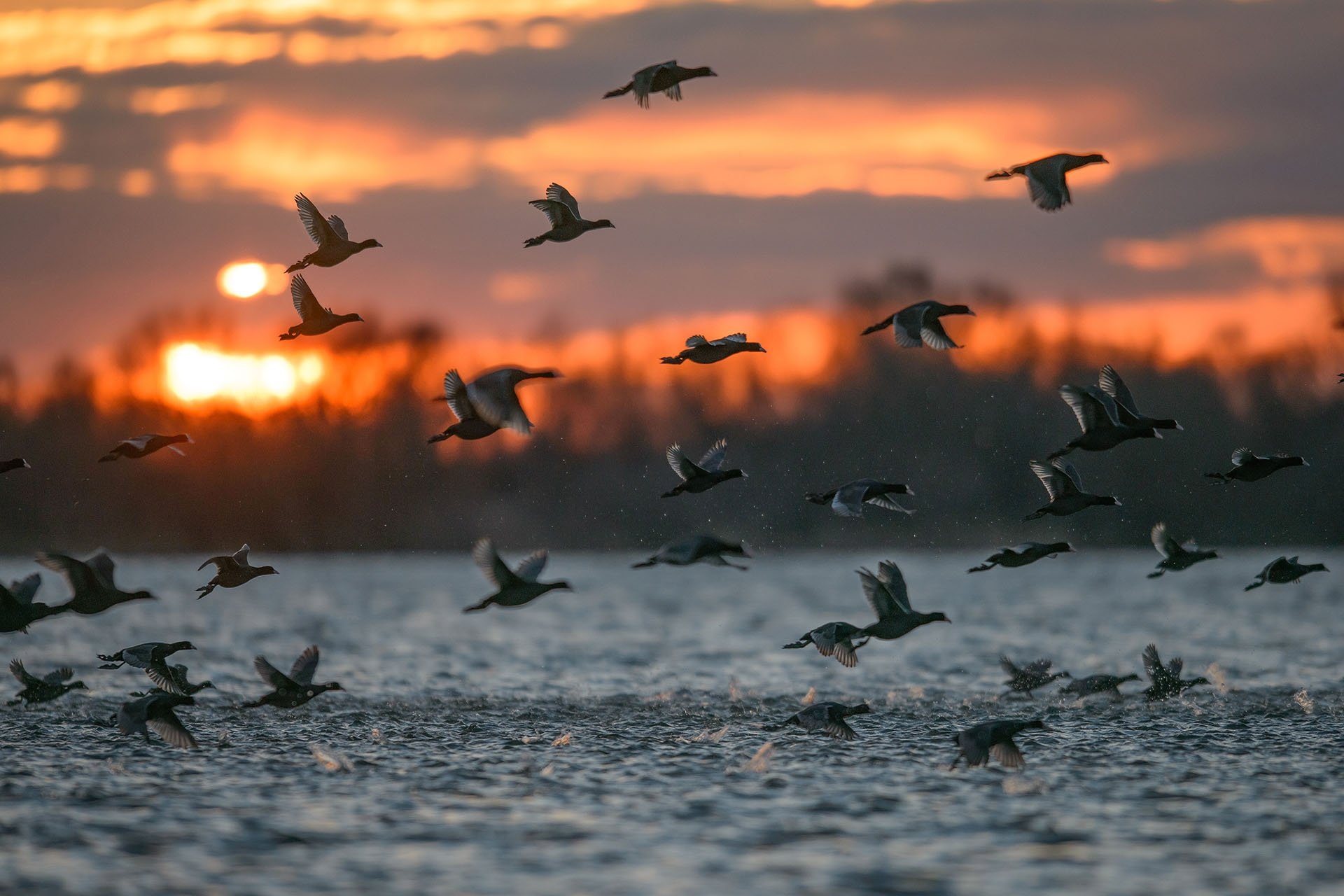
When the river reaches Pătlăgeanca, a Romanian village of about 130 residents, it splits in two. The northern branch (Chilia) extends 104 km, carrying about 60% of the Danube’s water and alluvium. The southern branch (Tulcea) flows southward until it reaches Ceatal (Furca) Sfântu Gheorghe. At this point, the river divides once again. Sulina, the short road in the middle, is permanently dredged and maintained for navigation along its 71 km. The Sfântu Gheorghe branch deviates to the southeast and, after 112 km, reaches the sea, forming the Sacalin islands.
Here are the broad water lines of the second largest delta in Europe (5800 km2), a living organism in continuous reconfiguration that grows annually by about 40 sqm thanks to the 67 million tons of sediments brought by the Danube.
From a geological point of view, the delta is in a mobile region of the Earth’s crust called the Danube Delta Platform, and its structure consists of a crystalline basement overlaid by a kind of sedimentary cover, a succession of Paleozoic, Triassic, Jurassic, Cretaceous, Neogene, and Quaternary deposits. After a formation process that lasted millions of years, today, we are in danger of destroying the peak of this geo-biological scaffold in a fraction of a second.
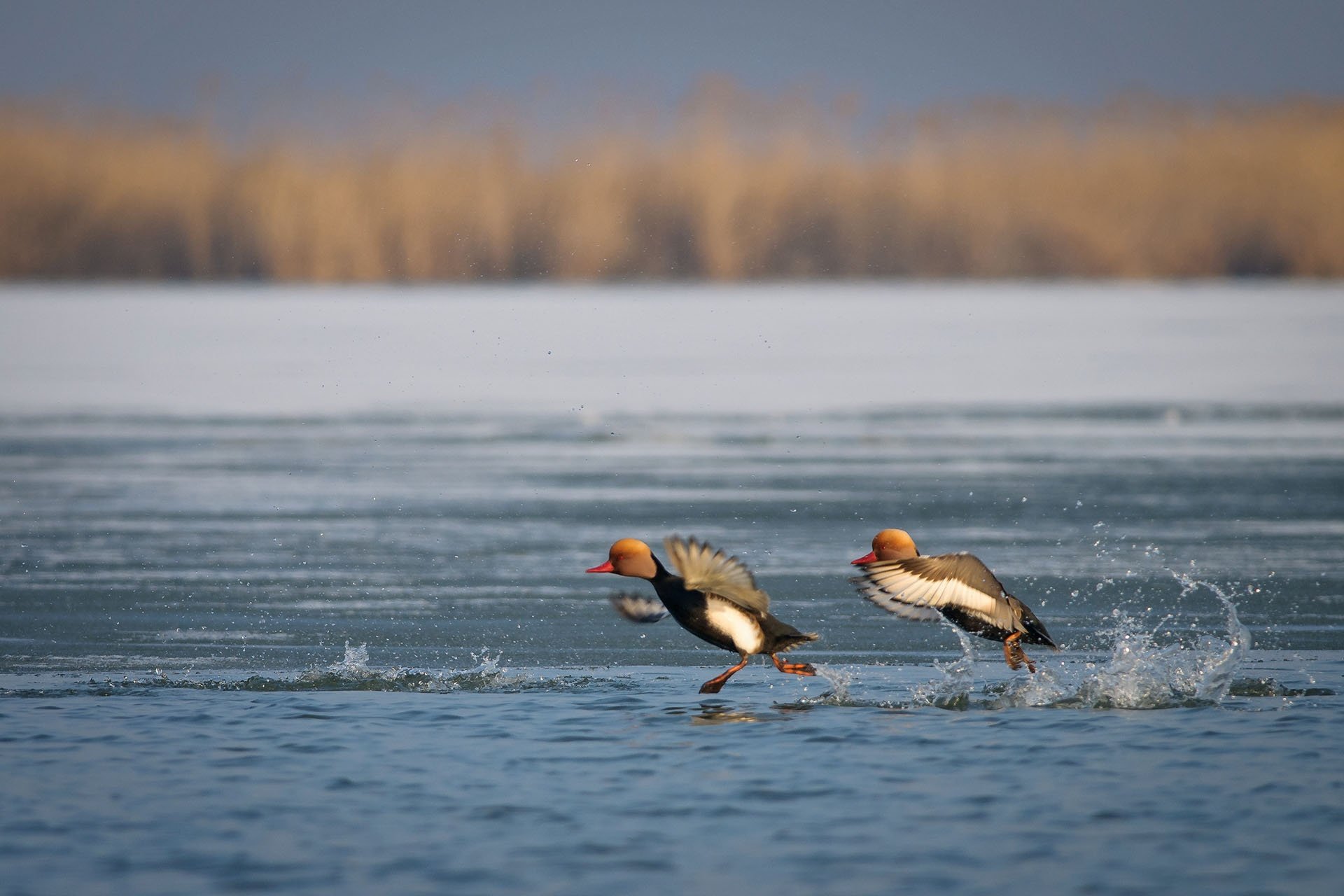
People have inhabited the delta since ancient times without their footprints to matter. It wasn’t until 1857 that the devouring spirit of the Anthropocene began to make its mark. This pivotal shift followed the Treaty of Paris, which led to the establishment of the European Commission of the Danube. Between 1865-1902, the Sulina River branch, today recognized as the poorest in terms of biodiversity, was made navigable. But it was the intervention of the socialist planned economy for the intensive exploitation of natural resources that really put the Danube Delta to the test. Over more than four decades of forced industrialization during communism, 100,000 ha were dammed, 85,000 were transformed into fisheries, agriculture, and forestry, and local people were employed in factories of all kinds. Following a visit in 1991, the explorer Jacques-Yves Cousteau said he saw a “mixture of the gorgeous and the horrible” and found it “incredible how it stayed alive after what you did to it.”
Although communism has passed, its wounds can still be found everywhere, either glaringly visible, like the gloomy ruins of the sand quarry or the dilapidated blocks where wild donkeys grazed at Caraorman, or hidden from view in the torn fabric of the biodiversity of palustrine, fluvial ecosystems, and coastal areas.
In the early years of post-communist freedom, resourcefulness and a disregard for the law led to poaching and economic activities that began to put pressure on the biosphere. “The delta is supervised by five bodies with control and protection roles. However, they are almost neutralized by poachers. I remember how the head of the Delta Police was wringing his hands, not knowing how to persuade the drivers of the cars to change. Most of them were old security guards turned into poachers’ informants for a fee,” wrote journalist Liviu Mihaiu, former governor of the Danube Delta, in an article published in the local edition of National Geographic magazine in 2009.
After the Revolution, affluent people from Romania built sumptuous holiday villas here, disturbing the waters and soul of the place with opulence, rapacity, and high-speed boats. Locals began to rush for wealth, seeking to emulate them. Some turned to poaching, while others embraced the destructive development model of chaotic weekend tourism. At a glance, you can understand what has happened in the last 20 years by passing by the village of Crișan, which stretches along the cliff for seven km dotted with villas, cabins, guesthouses, and elegant pontoons, next to ruined fishermen’s houses. Or by strolling along the path already deformed by concrete slabs through the perpetual construction site of holiday accommodations and buildings in the Lipovian village Mila 23, the most sought-after by tourists.
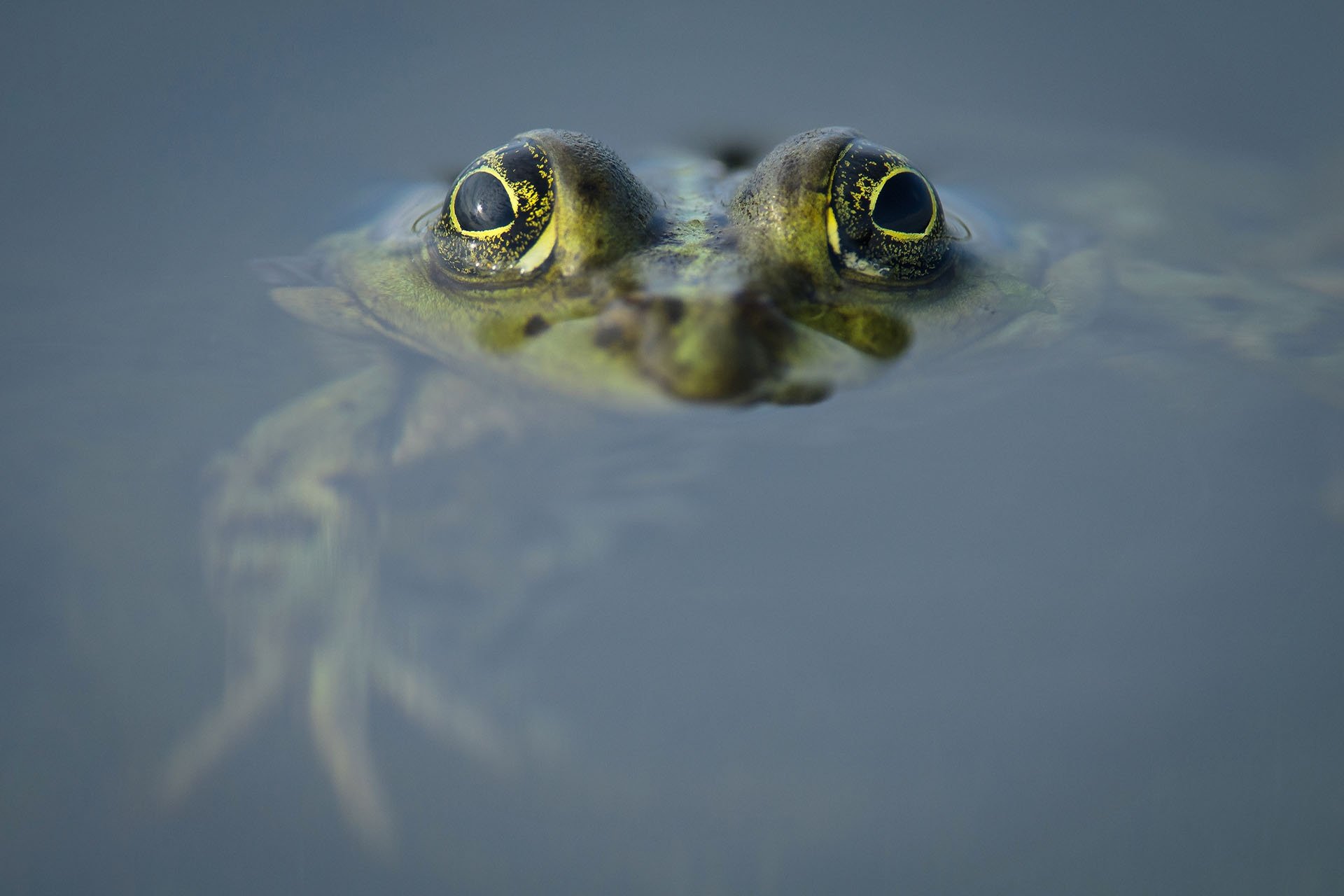
Saving the Delta
Guide Iliuță Goean fears that nothing will be left to show visitors in a few years. The shadow of a new form of tourism frowns on delta’s face – one of fast travel, where tourists try to cover everything in just one day. “During the summer, when the lakes and canals are less than a meter deep, thousands of boats zip through them eight hours a day. Almost the entire volume of water in a narrow channel passes through the propeller cone of a 200-300 horsepower engine, which comes at 70-80 km/h. Imagine how many fish get caught in that propeller! Also toads, frogs, crayfish, and birds. The food chain is broken, the vegetation is destroyed. We are no longer just talking about microorganisms, pollution, and the release of gasses underwater. If you break a link in the chain of life, it’s over,” he says.
A Bucharest native, in love with the Danube Delta since childhood, Goean moved here about 20 years ago and advocates enjoying nature through slow travel. He believes that visitors can largely influence the delta’s future. “First of all, choose an authorized operator, which is listed on the Ministry of Tourism’s website,” suggests the guide. “There are a lot of advertisements on the net by obscure PFAs posing as travel agencies. The boat should have low to /medium speed, below 25-30 km/h. Then, pay attention to three things: you want a guided tour, slow travel, and an uncovered boat. If you choose these three elements correctly, even the transfer from the shore to the Balta can be a wonderful experience.”
Goean is not alone in fighting for responsible tourism in the area. In the last decade, a movement focused on saving the delta and reviving the local community’s identity has also emerged. The multiple kayak-canoe champion Ivan Patzaichin and the architect Teodor Frolu founded an NGO in 2010 to teach ecotourism to locals. According to Teodor Frolu, the vice-president of the Ivan Patzaichin Association – Mila 23, “to have a balance between the exploitation of the Delta and its preservation as a natural ecosystem, you must return to traditions,” which you should bring up to date through income-generating solutions. The locals should “reclaim the inheritance they threw away, without realizing it was valuable.”
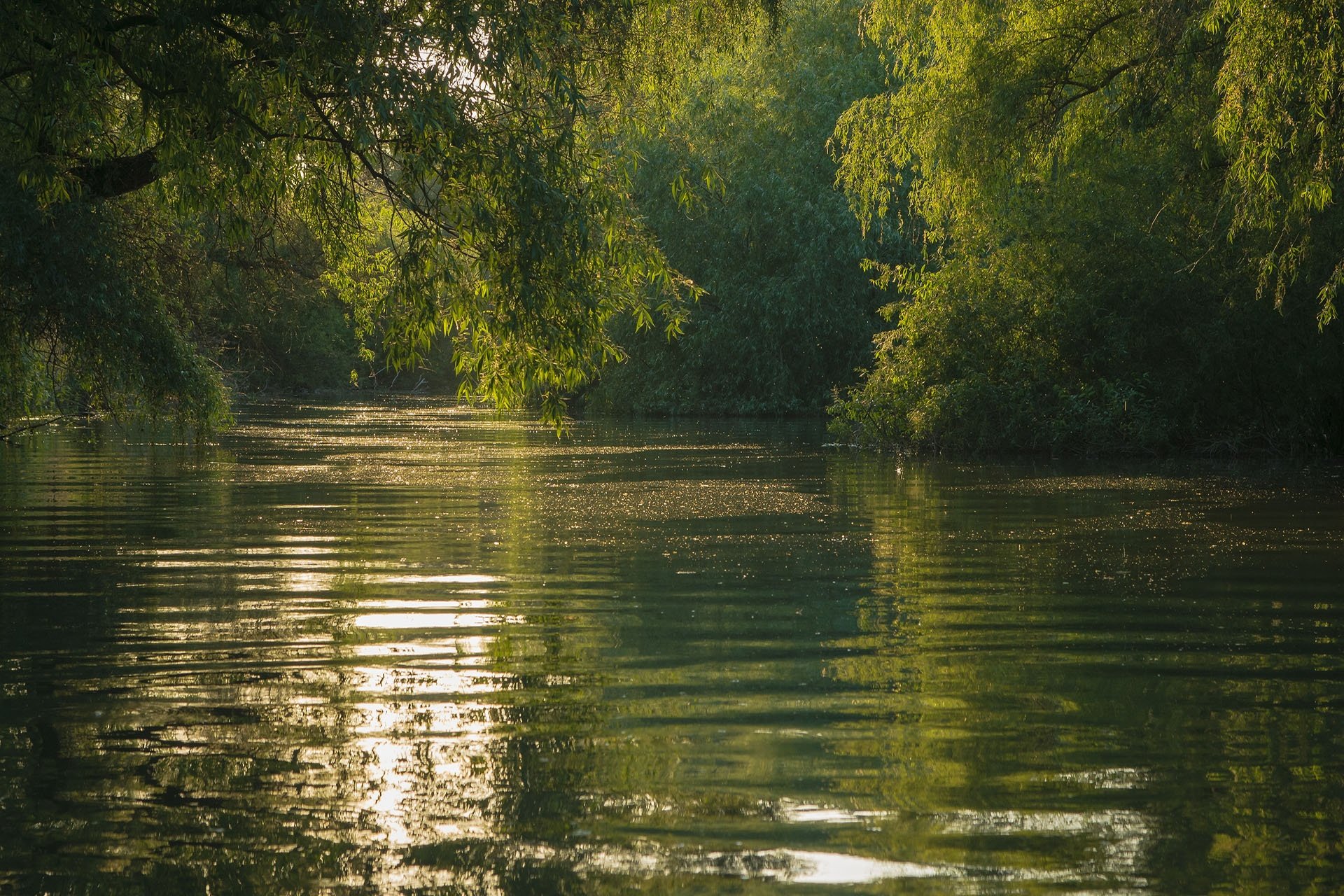
The inhabitants are the descendants of the Russian Lipovians and the Uranian Hahols, who arrived in the Danube Delta in the 18th century. Around 8,000 Cossacks (also known as Hahols) came here at the end of the 18th century after Tsarina Catherine II destroyed the military center of the Zaporozhian Cossacks in Ukraine. The Lipovians are former Don and Dnieper fishermen who left Russia and were persecuted when they refused to modernize the Russian church. After centuries of semi-isolation, when the delta became, after 1989, almost overnight, attractive to big-money tourists, these locals, gutted by the dissolution of their traditional world that began under communism, were thrown into the mix of weekend tourism.
For the Ivan Patzaichin Association – Mila 23, regardless of any suitable measures that may be decided in Bucharest, the responsibility of preserving the balance in the Danube Delta lies with the residents. They must find a way to restore equilibrium, keeping their traditions while ensuring decent incomes.
For these locals, who may have felt ashamed of traditions like the oar or their parental houses, seen as symbols of backwardness, the association designed and patented the “conotca” – a combination of canoe and boat – to rent to tourists. This encourages fishing where visitors are accompanied by a local. Tourists are taken to eat soup cooked on the spot at a refuge. The ecotourism infrastructure in Crișan also set up a bird sanctuary for wildlife photography in Caraorman, and organized a gastronomic route in Mila 23. And much, much more.
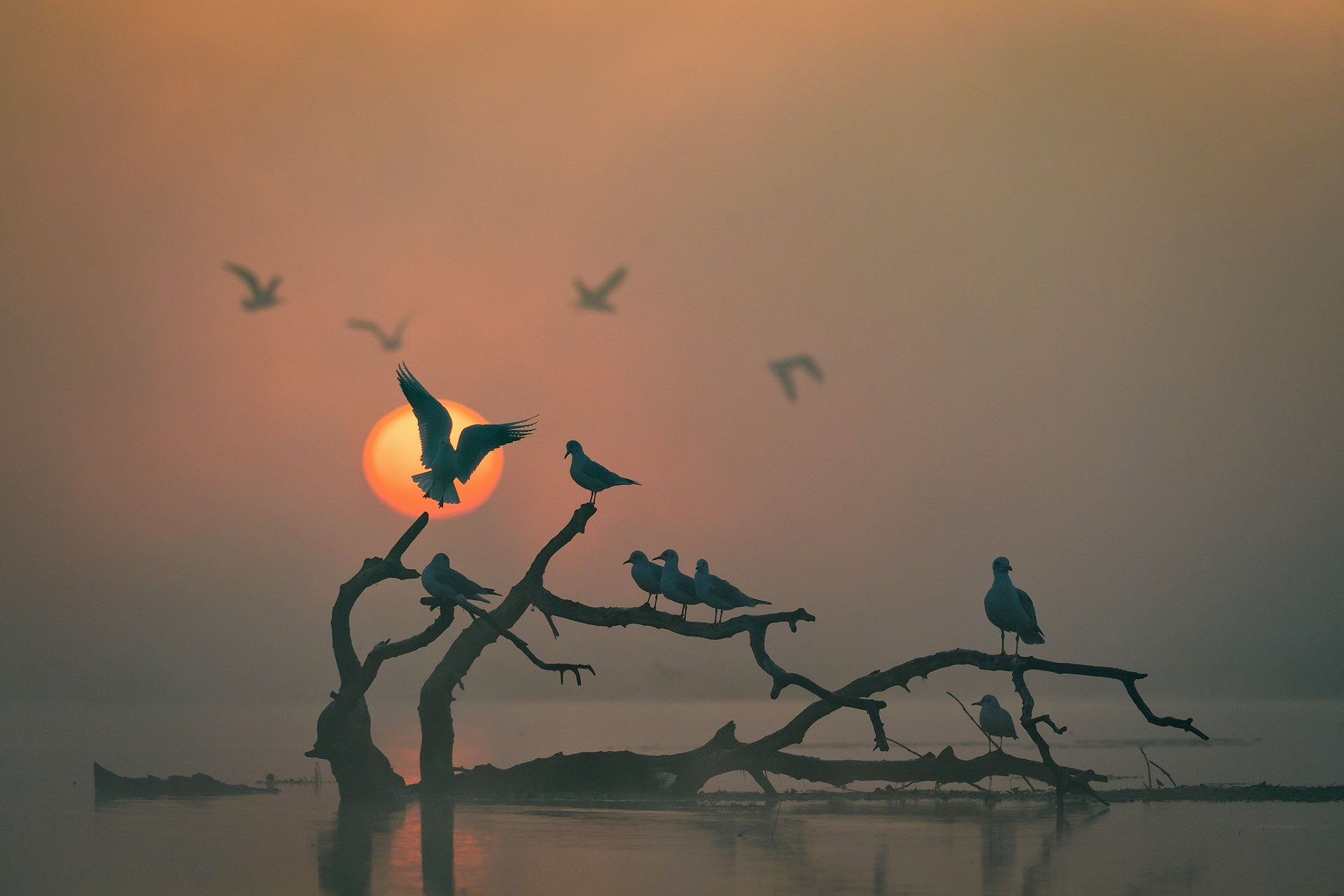
In Lipovean, fish takes the spotlight, cooked to perfection by the locals, and Mile 23 is probably the best place to eat it. The cooks here have won all the culinary competitions organized in the delta. In tiny houses, they cook according to the day’s menu, divinely! The smaller the guesthouse, the better the chances of eating fresh fish from the delta. And the bigger the hotel, the riskier your fish might come from overseas.
Why? Guide Iliuță Goean also introduces us to the tangled secrets of laws, markets, and restaurant kitchens. “No hotel can buy fish directly from the fisherman. The law obliges the fisherman to take the fish to the market. This is where the high-quality fish (carp, catfish, pike, salmon, found in smaller quantities) and all the low-quality fish (crucian carp, redfish, etc.) are sold. Furthermore, the markets force the buyers to give you x kg of high-quality fish, but only packaged with y kg of poor-quality fish. At a hotel where you need 200 kg of fish daily, imagine how much staff you need to clean, filet, and portion that much poor-quality fish. And then, hotels prefer to buy semi-prepared products from supermarkets, giving them a faster cooking flow. There is distribution by Metro by Selgros: the ship comes to the Danube Delta, docks at the pontoon, and drops boxes of frozen fish imported from Asia, Africa, and other regions. The drama begins: you may wake up to find that from a Pangasius comes a wonderful filet of Zander, and so on.”

Room for Hope
The pelican, the symbol of the Danube Delta, perfectly embodies the spectacular yet delicate interplay of strength and fragility, clumsiness and elegance within this ecosystem. These large birds with wingspans of up to 3m and long beaks, like a species of chilled pterosaurs from another world, are highly vulnerable in the face of modernity. A few centuries ago, their majestic flocks gracefully dominated the skies across Europe. As civilization advanced westward, pelicans retreated to the continent’s southeast, where they fared relatively well until the end of the 19th century. The Austrian naturalist Eduard Hodek, who made several research trips to the area between 1869 and 1886, wrote, perhaps exaggerating, about the presence of “millions” of pelicans inhabiting the lands between the Danube and the sea.
The colony of common pelicans at the Roșca-Buhaiova Reserve, the largest in Europe, numbers about 21,000 individuals today, according to an inventory made by the Romanian Ornithological Society in 2018. Be sure to try to see a flock of pelicans while you’re in the delta. Nothing seems to distill the grand spectacle of wildlife in the biosphere. You need a good guide, luck, and patience, just as pelicans need their hunt with precise rules in a script that evolution has perfected over tens of thousands of years. “Look at them; look at how they throw the water up. That’s their style of fishing. Several pelicans gather and form a circle in the middle of the water, or a semicircle if they have a shore nearby,” exclaims Iliuță Goean.
Pelicans are extremely patient when hunting. They circle a school of fish from afar and begin, step by step, to tighten the circle. Suddenly, they all put their heads in the water – and throw the water out to scare the fish. That’s how they push them to the middle. After they’ve narrowed the circle enough, the big frenzy begins. On the surface, only the tails are visible, then you see them rise again, all in unison. They repeat the pattern until their bellies are full. And their goiters.
“We have this treasure trove of biodiversity; it’s not something to be taken lightly,” Goean says. “This is what a trip to the delta should be: a biodiversity lesson in Romania’s most beautiful aquatic amphitheater, where people can understand the importance of preserving habitats.”
